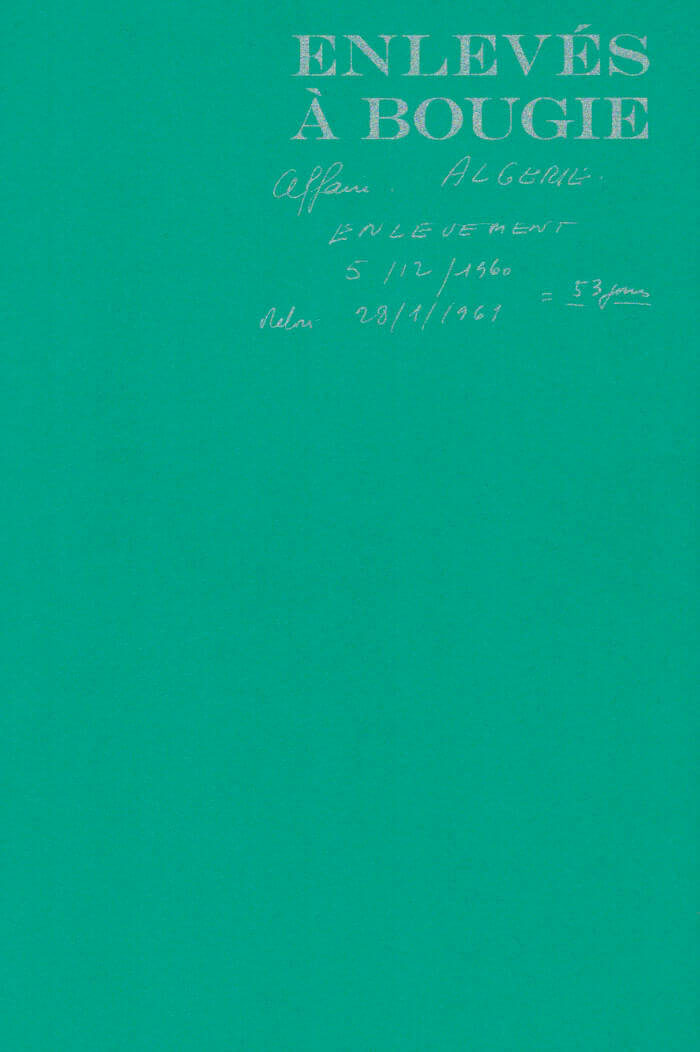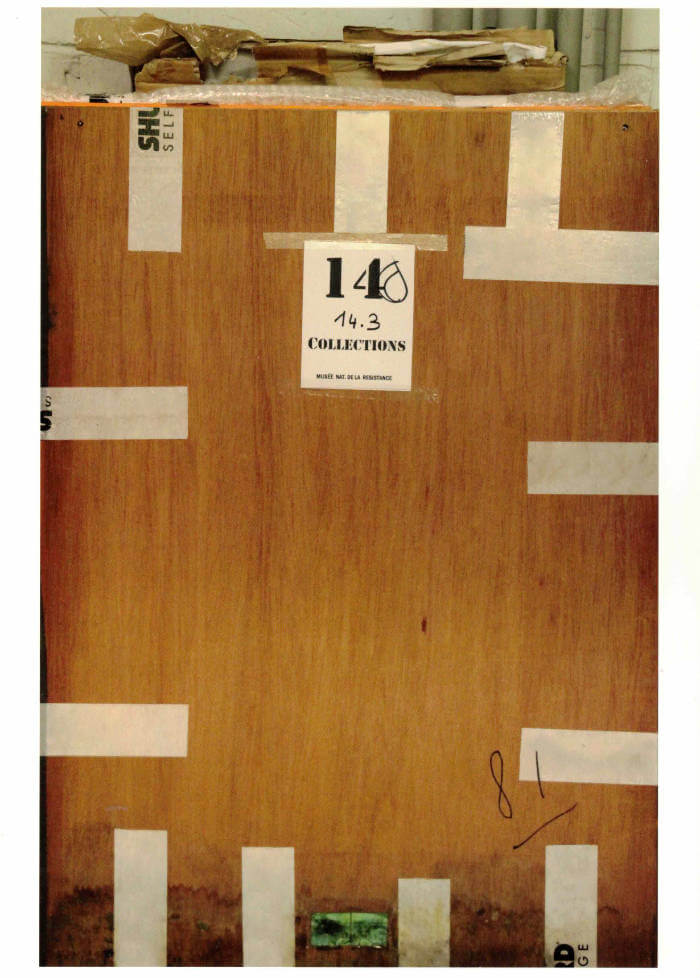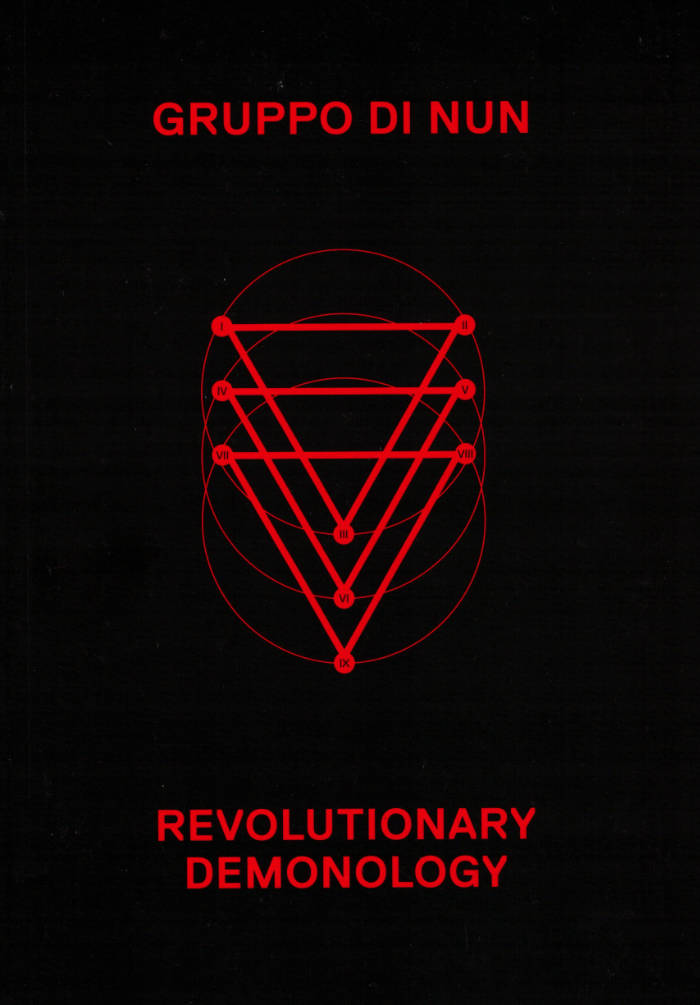
Enlevés À Bougie
Enlevés à Bougie is a visual archive compiling documents from the kidnapping of a French state employee during the War of Independence, in 1960, Bougie, Algeria.
Language: French

Enlevés à Bougie is a visual archive compiling documents from the kidnapping of a French state employee during the War of Independence, in 1960, Bougie, Algeria.
Language: French

“RUSTIQUE” is an artist book created by Nicola Godman. This book is sprung out of a residency in September 2021 at Hôtel Chevillon, a former Scandinavian artist colony in Grez-sur-Loing, France. Barbizon, the village where the painter Jean-François Millet (1814–1875) lived and died, is located 20 km away from there. The book interweaves the life and work of Millet with Godman’s photographs, drawings and personal anecdotes.
“RUSTIQUE” wishes to put forward the artistic gaze towards rural life by artists who themselves are born peasants. Nicola Godman (b. 1989, Rute) is an artist working with photography, video, books and stories, currently based in Stockholm, Sweden. Having grown up on an organic dairy farm, she is researching depictions of rural life in art history and contemporary culture.

This publication shows the waiting archive of the Museum of Resistance. The Brussels Museum of Resistance is undergoing renovation. Hidden in the basements of the civil affairs department, the stacked archive awaits a new home. Boxes filled with recognition files, photo albums, exhibition panels, books, flags, furniture, and other scenographic materials are scattered throughout the entire floor plan. The recently appointed archivist Samuel and historian Agnes are sorting through the archive pieces and are striving to ensure a future.

Third edition featuring afterword by Alessandro Sbordoni & several appendices, including a new translation & edit of “Taylor Swift Does Not Exist”.
This is a monumental and extensive work from someone who is arguably the most well-versed scholar of Baudrillard, Deleuze & Laruelle in the German-speaking world, Achim Szepanski, the original founder of Mille Plateaux, Force Inc Music Works and NON. This book is dedicated to Jean Baudrillard, who would be described by Achim as the most radical and advanced stimmung in Philosophy. Through this comprehensive and devouring analysis of Baudrillard’s work, the author presents a gripping account of their own philosophy; alongside his magnum opus Die Ekstasie der Spekulation, this book, In the Delirium of the Simulation, provides the strongest case for what might be called, in light of his passing, Szepanskism or Szepanskian Economics.
From Finance, to non-philosophy and radical experimental music, Szepanski is an anomalous and unique theoretician with one hell of a history.
CONTENTS:

La nouvelle catastrophe subie par le peuple palestinien est pire que la Nakba de 1948. C'est le premier génocide perpétré par un État industriel avancé depuis 1945, avec la participation des États-Unis et la soutien de l'Occident, France incluse. Chercheur franco-libanais spécialiste du Moyen-Orient, auteur de nombreux ouvrages traduit en vingt langues et contributeur régulier au Monde diplomatique, Gilbert Achcar dévoile le processus historique qui a mené à ce génocide et mène une réflexion rigoureuse et documentée sur ses conséquences pour le peuple palestinien, les peuples de la région et pour l'ensemble des relations internationales.

An anthology of occult resistance: unpredictable and fascinating, at times hallucinatory, sullying politics, philosophy, cybertheory, religion, and music.
The End Times are here. The Digital Middle Ages approaches, the plague reaps its deadly harvest, climate apocalypse is around the corner, and fanaticism, fascism, and madness are rampant. The idea that we might gain the upper hand over the dark abyss into which the planet is tumbling is a form of magical thinking, laboring under the delusion that we can subdue eternity with relentless bloodlust, brutish exploitation, abuse of power, and violence. Revolutionary Demonology responds to this ritual of control, typical of what esoteric tradition calls the “Dogma of the Right Hand,” by reactivating the occult forces of a Left Hand Path that strives for the entropic disintegration of all creation, so as to make peace with the darkness and nourish the Great Beast that will finally break the seals of Cosmic Love.
Unpredictable and fascinating, genuinely bizarre, at times hallucinatory, sullying politics, philosophy, cybertheory, religion, and music alike with its fevered touch, this “anthology of occult resistance” collects together the communiqués of an arcane group who are already being hailed as the first morbid blossoming of “Italian Weird Theory”: a rogue contingent of theorists, witches, and sorcerers who heretically remix gothic accelerationism with satanic occultism and insurrectional necromancy.

Carolina Valente Pinto, Tabea Nixdorff
The book Posting brings together a selection of feminist posters from Dutch archives to reflect on posting as an activist strategy, holding the potential to create counter-publics to mainstream culture and to fight against the erasure, exoticization, or tokenism of bodies and experiences that deviate from normative preconceptions.
As is the case for many professions, in the history of Dutch graphic design the absence of women, non-binary, queer, Black designers is striking. This doesn’t only point back to systematic processes of exclusion in the first place, but also to the biases at play regarding whose work is remembered and archived. While efforts have been made to add forgotten names to the existing canon, the many posters, flyers and other printed matter shelved in queer and feminist archives remind us to question the notion of single authorship altogether and instead study graphic design as a decisively collaborative and transdisciplinary practice, which is especially true for community-led and volunteer-based projects.
The posters featured in this book point to this rich landscape of feminist organizing, and were found at the International Institute of Social History and the International Archive for the Women’s Movement (IAV-Atria) in Amsterdam.